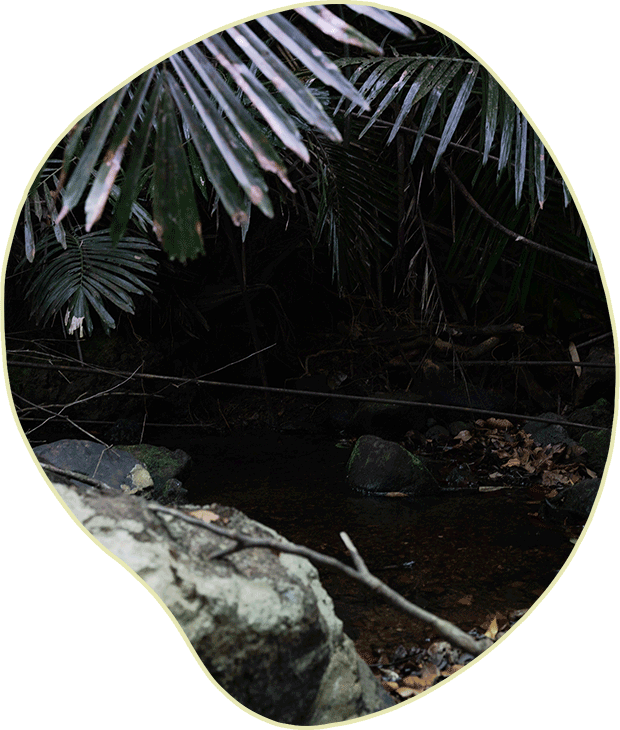
Forest on
Stilts A Personal Essay
Conservationist Malhar Indulkar describes an exciting discovery deep in his home state of Maharashtra—the northernmost Myristica swamp known today!
As an amateur birder, a book fell into my hands. Recommended by my mentors, it was a simplified version of the Western Ghats committee report—outlining environmental challenges and directives by the central government-appointed committee—headed by Dr. Madhav Gadgil. I came across a paragraph in which he described a mysterious forest in the deep valleys of the Western Ghats. These small fragments of forest comprise features of a mangrove but, unlike them, stand in a freshwater swamp. This community of giants have stilt roots to anchor themselves: they grow tall and erect with dense canopies that do not allow sunlight to penetrate, he wrote. Without a smartphone or internet access to instantly satisfy my curiosity then, I began to imagine this mangrove-like forest. I hoped to visit the Ghats of Karnataka and Kerala at some point in my life to see it.
The wait lasted a decade until my friend Gayathri Shreedharan and I discovered one—unknown to the outside world and that too—in my home state, Maharashtra. It came to be a new distributional record of Myristica Swamps in the Ghats, and significantly, the northernmost. Gayathri is an alumnus of CCMB Hyderabad. She was studying the presence of Batrachochytrium dendrobatidis (BD fungus) infestation on frogs which has wreaked havoc, killing mass populations of amphibians. Gayathri was on a hunt for perennial slow-flowing streams for frogs.
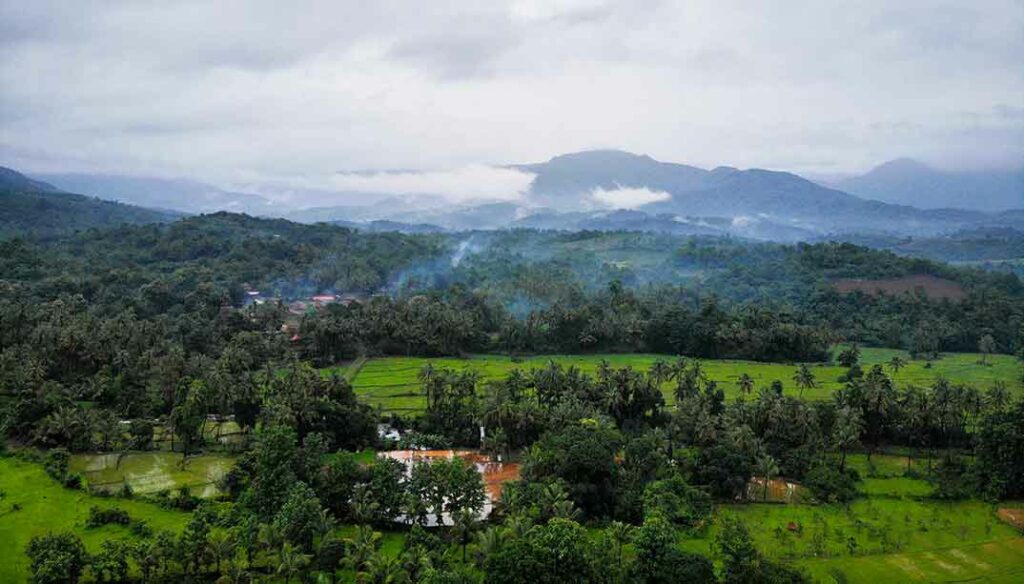
Farms interspersed with forests
In recent years, Tillari Valley, the southernmost tip of Maharashtra’s Ghats (better known as Sahyadri) has become a hotspot for wildlife researchers. The descendants of researchers’ families live in a common residence, which has served as a field station for researchers arriving year on year. Next to this field station lies the temple of a local deity, Maygawa, at the village epicentre. Villagers meet here to celebrate, discuss important matters, play theatre and worship. Shigma (A Konkani version of Holi) is celebrated annually in the courtyard of the Maygawa temple. Holi is symbolically a tree harvested from a nearby sacred grove, transported and erected in the courtyard. A tall holi is a source of pride for the village within the region. Researchers have been actively participating and observing the festival, little knowing that the tree is Myristica fatua and the sacred grove a Myristica swamp.
It became clear when Narayan Desai (Narayan Kaka) took us to the swamp in May 2018, to meet the demands of Gayathri’s study. Narayan Kaka is the torch-bearer for researchers here. With his help, researchers have made incredible discoveries in the landscape, the Myristica swamp being one of the most prominent. On our first step inside the forest, we had a reaction similar to the researchers who found the blood orchid that could treat cancer in the Hollywood movie Anaconda. I recalled what I had read in the Western Ghats committee report, and Gayathri remembered the name ‘Myristica swamp’. We then reviewed all information we could gather on the habitat to confirm that it was a Myristica swamp. In a research note we found that so far the northernmost record of a swamp was only in Goa (named Nirankarachi Rai). Sadly, a dozen trees in a small piece of land was all that was left when we visited. It was said to have been a greater area which had suffered encroachment from all sides for paddy. We found that the swamp is called a bambar in Konkani, and both Myristica swamp hamlets were named Bambar and Bambarde. We then checked the features of its trees, fruits, leaves and barks to identify species. Ashish Nerlekar, a young botanist from Pune, helped us identify typical features including stilt roots, pneumatophores (roots that pop up above the ground for aeration), and fruits with an aril (aril of Myristica fragrans is used as a spice called Jaypatri).
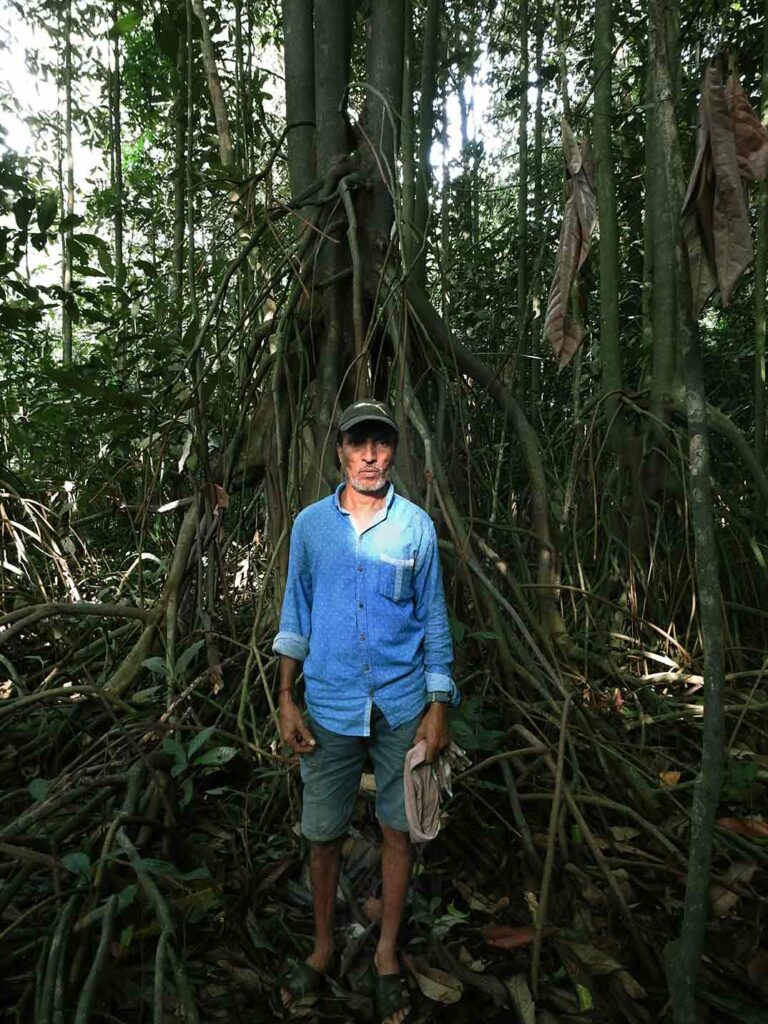
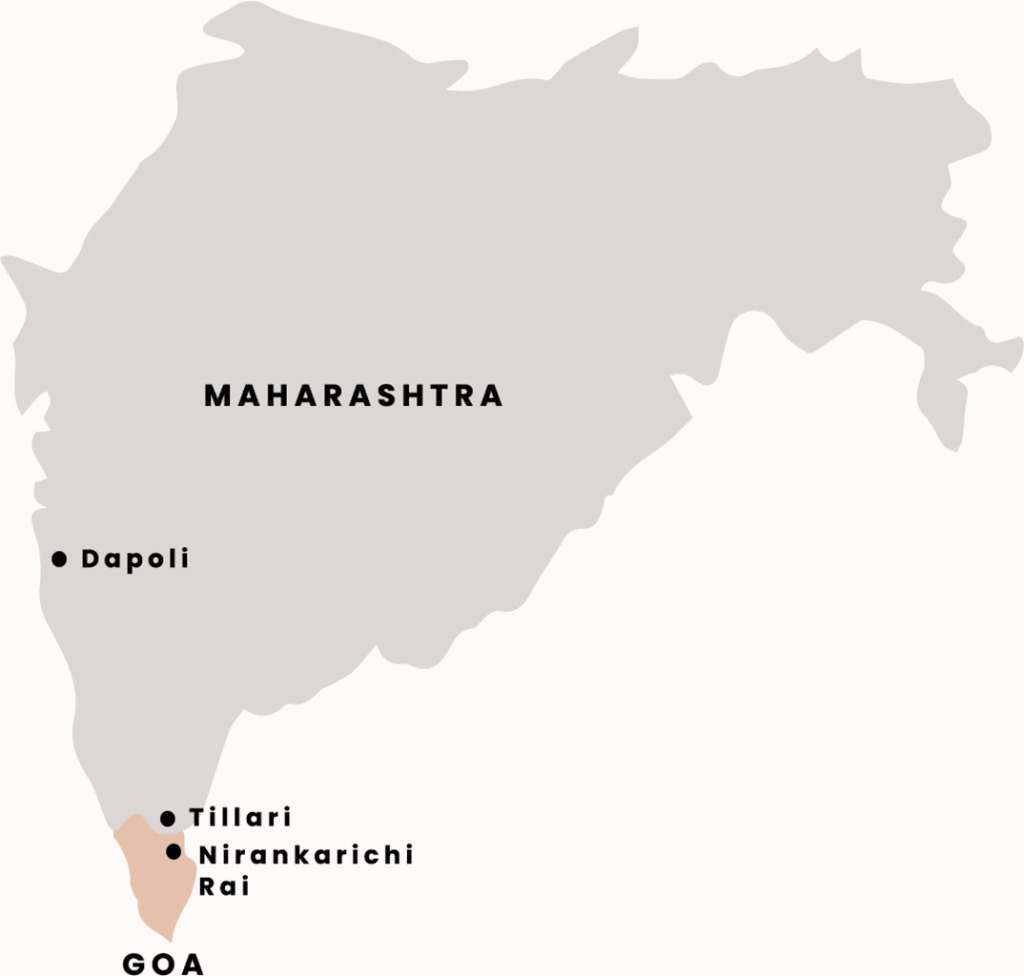
While most Myristica swamps are found in Kerala and Karnataka, the northernmost patch was previously thought to be Nirankarichi Rai in Goa. Malhar and Gayathri’s discovery in Tillari revealed a new northern limit in Maharashtra, while fossil-findings in Dapoli suggest a much wider ancient distribution.
Reading through literature and research on the swamps, we tried to connect the dots. We came upon interesting studies, one of which was conducted by a team of scientists from Agharkar Research Institute, Pune (ARI). Fossils of Myristica trees were found in a well under construction near Dapoli, a place much further north (about 250 km) from the swamp we had just found in Maharashtra. Their analysis suggests that the whole Konkan region must have received much more rainfall than it does today. Swamp fragments were lost in time due to reduced rainfall, which is attributed to the active tectonic process. Now the swamps exist only down south, which receives rainfall for a greater part of the year.
Another interesting study notes that the trees of the Myristicacea family are one of the first flowering plants on earth. They date back 140 million years. Returning to this timeline, we may find ourselves surrounded by dinosaurs, before the Indian tectonic plate dislocated to form the map we now know. Trees in the Myristicaceae family have existed since then, which is why they are also called living fossils. A small play was enacted by children in the village in which the great grandfather tree recites the story of their family to the baby saplings. The grand tree says, ‘Our ancestors saw dinosaurs and the Himalayas in the making.’ Children with tree mascots brought in Myristica as a source of pride for their village and received a standing ovation from the audience.
Rahul transplants them back to the swamp and monitors their growth like his own child.
Rahul Thakur, a young boy living beside the swamp, realised that he lives beside a heritage spot. With his phone camera, he began to capture whatever he thought was interesting between the canopies and the wet swampy floor. Fond of experimenting with growing veggies in his farmland, he soon found a way to grow Myristica saplings in a controlled environment. He observed how the Myristica seeds would fall into his paddy field and germinate. Earlier, the tiller would row upon the germinated seeds, but now Rahul transplants them back to the swamp and monitors their growth like his own child. There is an alliance between Rahul, Narayan Kaka and the researchers. Narayan Kaka and he discard any fancy ideas that come up from time to time which may threaten the swamp forest. For instance, they were firm in opposing a laterite pathway through the forest that would have obstructed the flow of water channels.
Research by Shivani Krishna, an assistant professor of Biology at Ashoka University, unearthed the mystery of burrowed Myristica seeds. She anchored these seeds with a fishing line and waited. To her surprise, crabs much smaller in size than the seeds transported them to their burrows. They fed on aril while the seeds were left to germinate. Other frugivores like rodents tend to leave the seeds on the forest floor, but the refuge offered by crabs creates a much better chance for germination. Learning these facts from researchers, Rahul and Narayan Kaka are now the guardians of intelligent opinion who oppose any unbridled ambition. They have also been strong critics of compounding the swamp fragment as it may obstruct freely roaming wildlife.
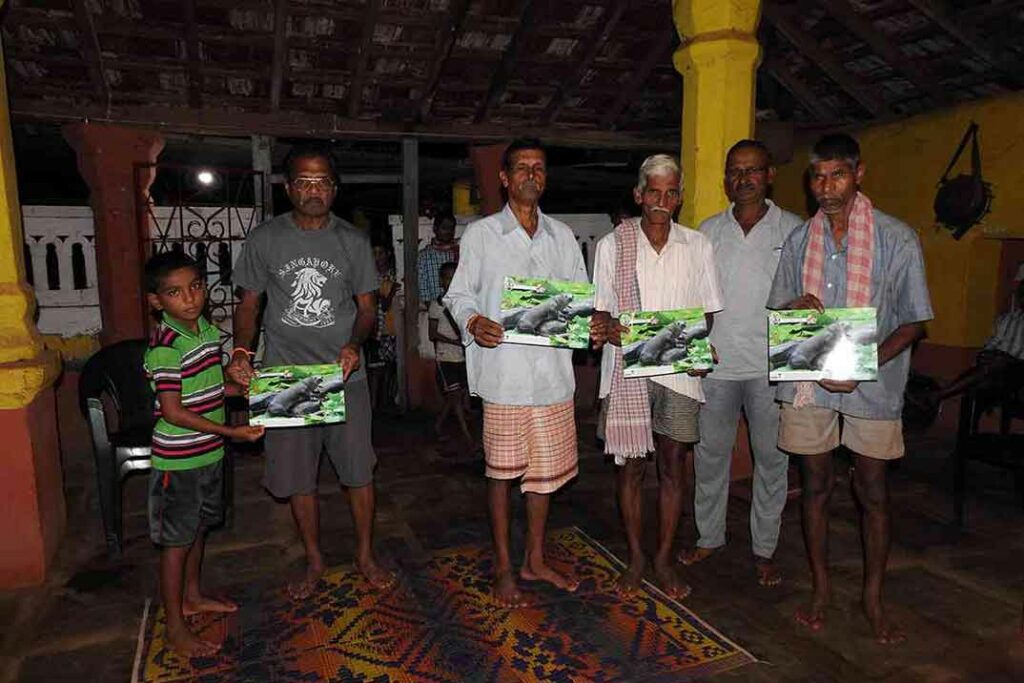
A programme to decide on fish plot conservation.
Families living around the swamp are also keen to experiment with organic farming. This has been established with the help of Sanctuary Foundation’s Mud on Boots programme and the River Otter Conservancy’s initiative. We conducted sessions in series not just with those families but in different hamlets of the village. Farmers are excited to see the implications and amazing results of organic farming techniques. Venkatesh Rajan, a Sawantwadi-based intellect and a proud farmer, mentored this initiative. Jivamrit solution was the superhero of these sessions: a mix of cow dung, urine, flour of dicots, jaggery, and a handful of fertile soil. This, when added to the soil with water, boosts the plant’s growth. It was crucial that the families around Myristica felt enthusiastic about organic farming, given the deteriorating health of the larger ecology. There is no success to be celebrated yet but it is at least a move towards eco-friendly farming.
The forest department is seeking an alternative to the tree felling during the festival. They are negotiating with the community to arrive at a win-win situation. The department and the state government have taken positive steps declaring the swamp a natural heritage site. This is expected to build goodwill within the community—those who have conserved their heritage for these long years.
Support Grassroots Conservation
Contact neyi@sanctuaryasia.com if you would like to specify any one Mud on Boots programme as the recipient of your donation, and/or to receive your 80G certificate on donations above ₹50,000/-
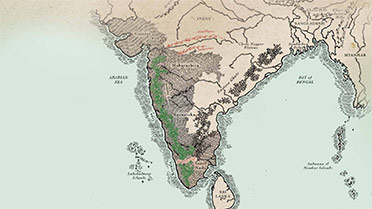 Back to top
Back to top
